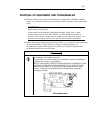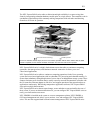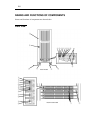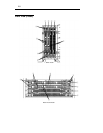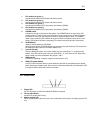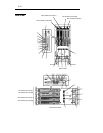
2-3
The NEC Express5800/ft series achieves fault-tolerant high-availability in a space-saving form
factor by incorporating redundant hardware module pairs in a single chassis. These modules work in
synchronous tight lockstep while constantly making comparisons with each other and detecting
anomalous diversions in operation.
Even if one hardware module stops, the server can continue operation with the other module. After the failed
module is replaced, the new module will obtain information from the other and resume operation.
NEC Express5800/ft series is a highly fault-tolerant server that achieves continuous computing
operations, data storage mirror, and continuous network connection. It allows you to run
Linux-based applications.
NEC Express5800/ft series achieves continuous computing operations for the Linux operating
system and server-based applications with its redundant CPU processing and redundant memory. It
assures data redundancy through duplication of server data on an independent storage system. These
features eliminate server downtime that is usually caused by network disconnection or trouble with
the I/O controller, Ethernet adapter or disk drive, and support operation of the network and server
applications continuously. While being transparent to application software, NEC Express5800/ft
series achieves high fault-tolerance.
NEC Express5800/ft series detects status changes, errors and other events and notifies the user of
these events. If you use an alarm notification tool, you can configure NEC Express5800/ft series to
notify you when certain events occur.
NEC ESMPRO is installed on the system as a server management solution. NEC ESMPRO, a
GUI-based management tool, allows you to monitor, view, and configure NEC Express5800/ft
series. This tool also supports both local and remote management of NEC Express5800/ft series.
Standard product
N
ew faul
t
-tolerant technology
Mirror
Compare/Sync
Mirrored
Linux software programs
Memory
Memory
CPU Module #1
CPU Module #2
PCI Module #1
PCI Module #2





